Polestar 1 engines, drive and performance
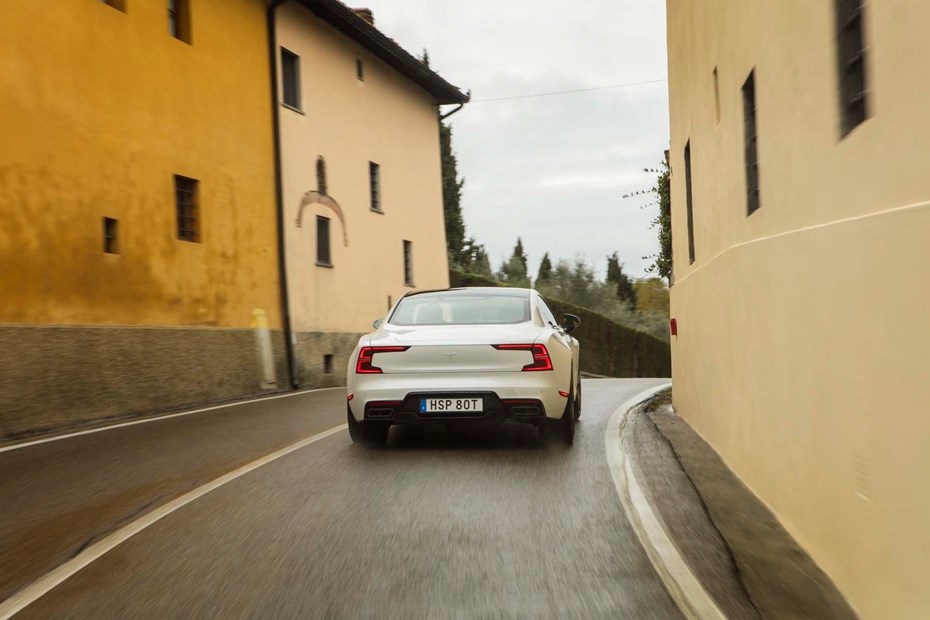
- 2.0-litre four-cylinder petrol engine teamed with…
- Two electric motors, plus one smaller starter generator
- Swift in all-electric Pure mode, relentless acceleration in Power mode
The Polestar 1 enjoys a range of propulsion methods that, when combined, make 609hp and 1,000Nm of torque – gargantuan figures by any measure. Said numbers are provided by two 85kW electric motors powering the rear wheels (producing 232hp and 480Nm of torque), a 2.0-litre four-cylinder supercharged and turbocharged petrol engine (making 309hp and 435Nm of torque) and a crank-integrated starter generator that delivers a further 68hp and 161Nm of torque.
Depending on which drive mode is selected (five in total – AWD, Pure, Hybrid, Individual and Power), propulsion is taken either from the electric motors and engine or just the former. Indeed, with a WLTP all-electric range of 78 miles, the 1 could feasibly be driven in Pure mode for most of the time, only using up the 1’s 34kWh battery. A ‘one pedal’ regenerative braking setting can also be selected on the transmission, allowing for greater battery regeneration when slowing down.
Outright performance in electric mode is brisk and feels similar to many smaller electric cars currently on the market. There’s no quoted 0-62mph time, however top speed is rated at an entirely respectable 100mph. Switch into the default Hybrid mode and you’ll benefit from combustion power when required. This means that while the rear electric motors still provide most of the drive, the 2.0-litre petrol engine is available when needed – say, for a quick overtake or hard acceleration onto a motorway.
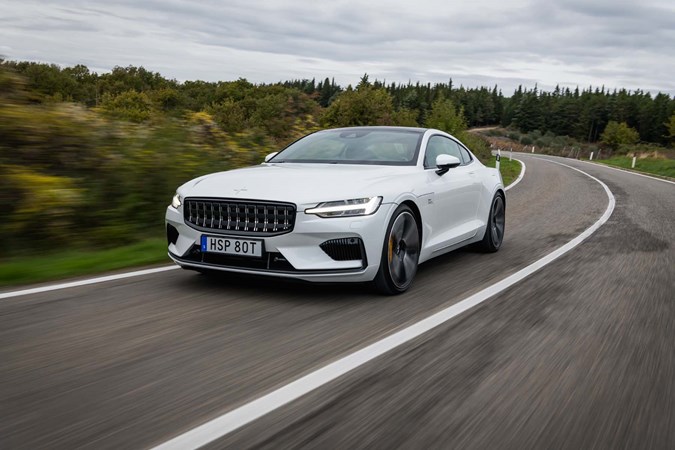
For a long-distance journey, Hybrid provides a well-judged balance within the powertrain. The switch from electric to electric with engine assistance is smooth and gives the car an effortlessly powerful feel, yet you do need to wait a second or so between flooring the throttle and the engine kicking in.
Power mode, meanwhile, is where the Polestar 1 shifts into a setting where performance is optimised. That means the engine is constantly on and working in tandem with the electric motors. As such, 0-62mph dispatched in 4.2 seconds with top speed rated at 155mph. Impressive figures, yet due to the 1’s hefty weight, it doesn’t deliver the sort of instant, throw you into the back of your seat performance you might expect.
What it does do, is provide an unrelenting turn of supercar-rivalling pace once it’s in its stride. Legal speeds feel like child’s play for the Polestar 1, with almost zero let up in the acceleration during gearchanges thanks to the 68hp starter generator sustaining the power. And, talking of the gearbox, it performs its duties as a slushy, GT transmission with aplomb, yet still shifts with enough speed to complement more committed driving – even if down changes on the paddles could be more obedient.
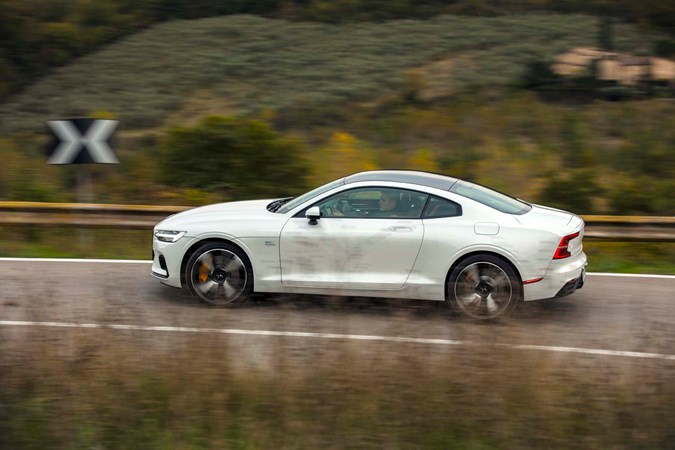
The noise from the four-cylinder engine is also a pleasant surprise, delivering a far sportier, more enthusiastic sound than it does in any other Volvo. Electric mode, meanwhile, delivers a notable whine when accelerating. It’s not unpleasant, but differs from the near silence that you get in a number of other plug-in hybrids.
How does the Polestar 1 handle?
- Superb handling despite 2.4-tonne kerbweight
- Manually adjustable Öhlins dampers
- Monster Akebono brakes deliver incredible stopping power
For a car that weighs 2.4 tonnes the Polestar 1’s handling is deeply impressive. Admittedly, it benefits from an evenly balanced 48:52 weight distribution and low centre of gravity (thanks to clever placement of carbon fibre and steel), yet when it comes to how well a car corners, it’s hard to mask such enormous heft.
Much of the Polestar 1’s talents come from the manually adjustable Öhlins Dual Flow Valve (DFV) dampers. Switchable through 22 different settings front and rear (this needs to be done when stationary, with a trolley jack), the standard calibration is 9 at the front and 10 at the rear – a setting that we found to be brilliantly judged for enthusiastic driving.
Pitch the 1 into a corner and there is a little body roll (where the body of the car leans on the chassis), yet it feels so elegantly controlled that you barely give it a second thought. Instead marvelling about how much grip and traction there is into, through and out of corners. And while sheer competence is impressive, the 1’s ability to put a smile on the driver’s face is equally satisfying.
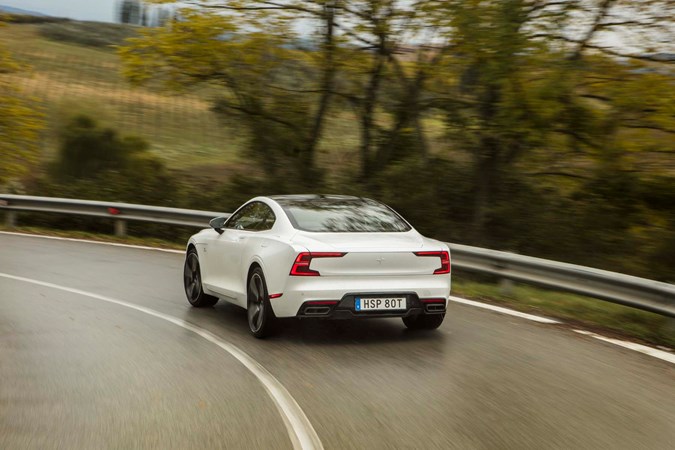
It’s the kind of car where you can build up a rhythm, learning how best to exploit its broad range of talents and becoming more and more confident the longer you spend behind the wheel. Sure, there’s little in the way of steering feel, yet its sensitivity is superbly judged, while the slight levels of body roll allow the driver to realise when grip levels are starting to fail (hardly ever).
Special mention also has to go to the Polestar 1’s brakes. They’re six-piston Akebono units at the front, and the stopping power they deliver is nothing short of remarkable. Lean on them hard into a corner and speed is scrubbed off with devasting effect, helping to ease any concerns that driver may have about driving such a heavy car enthusiastically. The only downside, is their tendency to be grabby at low speeds, thus sometimes making lighter braking difficult to modulate.


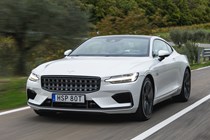
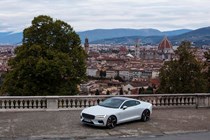

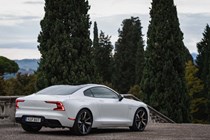

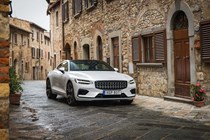
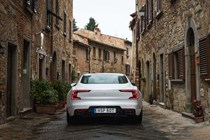
.jpg)

.jpg)
.jpg)
.jpg)
.jpg)
.jpg)
.jpg)



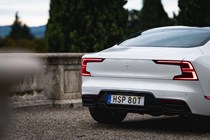
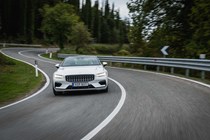
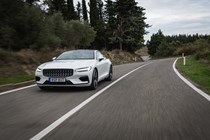
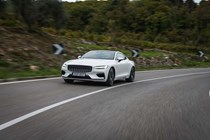
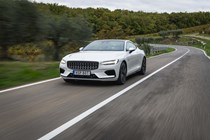


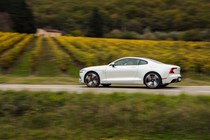

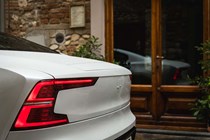
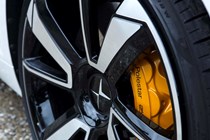
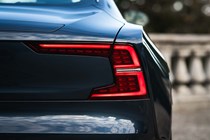
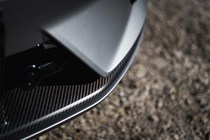
.jpg)

.jpg)
.jpg)
.jpg)
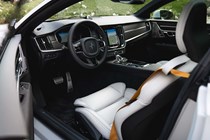
.jpg)
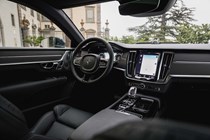


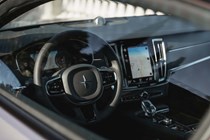
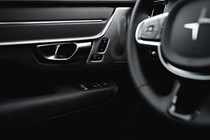

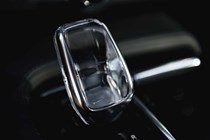


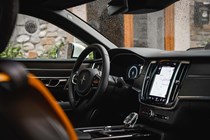
.jpg)
.jpg)
.jpg)
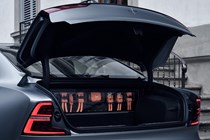
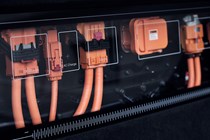
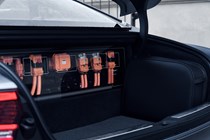
.jpg)







.jpg?quality=50)

.jpg?quality=50)
.jpg?quality=50)
.jpg?quality=50)
.jpg?quality=50)
.jpg?quality=50)
.jpg?quality=50)
















.jpg?quality=50)

.jpg?quality=50)
.jpg?quality=50)
.jpg?quality=50)

.jpg?quality=50)










.jpg?quality=50)
.jpg?quality=50)
.jpg?quality=50)



.jpg?quality=50)